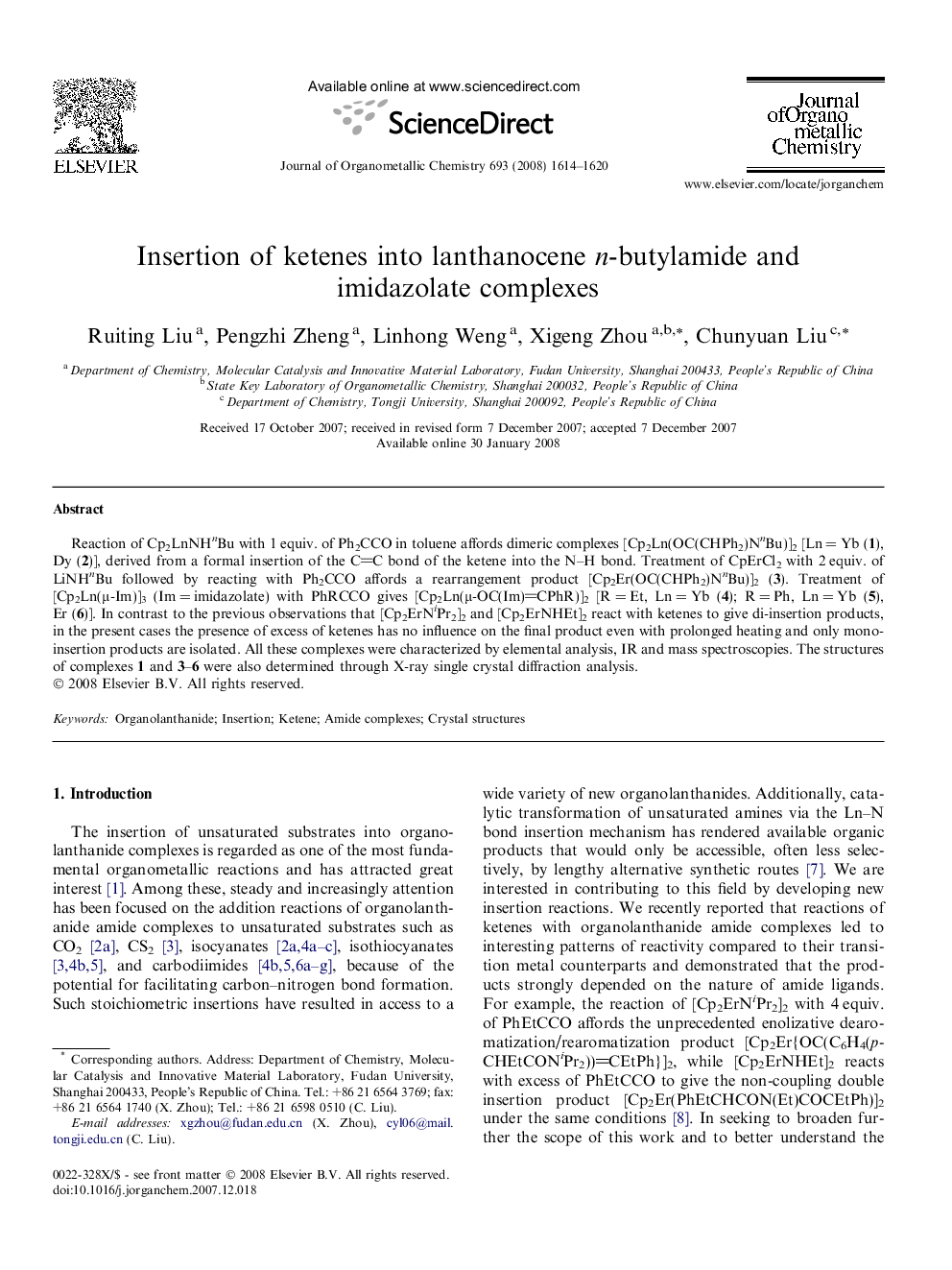| Article ID | Journal | Published Year | Pages | File Type |
|---|---|---|---|---|
| 1327998 | Journal of Organometallic Chemistry | 2008 | 7 Pages |
Reaction of Cp2LnNHnBu with 1 equiv. of Ph2CCO in toluene affords dimeric complexes [Cp2Ln(OC(CHPh2)NnBu)]2 [Ln = Yb (1), Dy (2)], derived from a formal insertion of the CC bond of the ketene into the N–H bond. Treatment of CpErCl2 with 2 equiv. of LiNHnBu followed by reacting with Ph2CCO affords a rearrangement product [Cp2Er(OC(CHPh2)NnBu)]2 (3). Treatment of [Cp2Ln(μ-Im)]3 (Im = imidazolate) with PhRCCO gives [Cp2Ln(μ-OC(Im)CPhR)]2 [R = Et, Ln = Yb (4); R = Ph, Ln = Yb (5), Er (6)]. In contrast to the previous observations that [Cp2ErNiPr2]2 and [Cp2ErNHEt]2 react with ketenes to give di-insertion products, in the present cases the presence of excess of ketenes has no influence on the final product even with prolonged heating and only monoinsertion products are isolated. All these complexes were characterized by elemental analysis, IR and mass spectroscopies. The structures of complexes 1 and 3–6 were also determined through X-ray single crystal diffraction analysis.
Graphical abstractReaction of Cp2LnNHnBu with Ph2CCO affords dimeric complexes [Cp2Ln(OC(CHPh2)NnBu)]2 [Ln = Yb, Dy], derived from a formal insertion of the CC bond of the ketene into the N–H bond. Treatment of [Cp2Ln(μ-Im)]3 (Im = imidazolate) with PhRCCO gives [Cp2Ln(μ-OC(Im) = CPhR)]2 [R = Et, Ln = Yb; R = Ph, Ln = Yb, Er].Figure optionsDownload full-size imageDownload as PowerPoint slide
